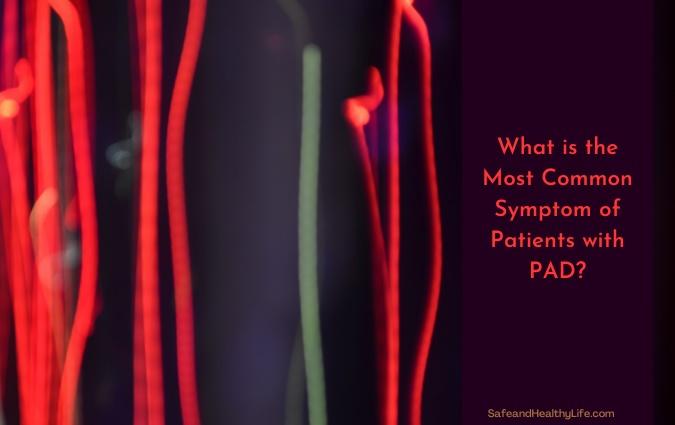What is the Most Common Symptom of Patients with PAD?

Peripheral artery disease (PAD) is a common health condition, affecting an estimated 200 million people worldwide. It can lead to reduced mobility and cardiovascular issues, among other issues.
If you are at risk of developing PAD, it is important to understand its symptoms and how treatment can help.
What is PAD?
While peripheral artery disease (PAD) is a vascular condition that can affect any limb, the most common type of PAD usually impacts the legs, ankles, and feet.
The primary cause of PAD is atherosclerosis, which occurs when fats, cholesterol, and other deposits accumulate in the artery walls.
These deposits harden over time and become plaque buildup, which restricts blood flow and can even lead to a complete blockage.
Risk factors for PAD include:
- Smoking
- Diabetes
- High cholesterol
- Family history of PAD
- Being over the age of 65
- Being diagnosed with diabetes and other health conditions (i.e. obesity or high blood pressure)
Even if you are not currently experiencing symptoms of PAD, you should still see a doctor if you meet the above risk factors.
What are the Most Common Symptoms of Peripheral Artery Disease?
Many people with PAD don’t experience any symptoms, especially in the early stages of the disease.
For those that do, the most common symptom is pain when walking that subsides at rest, also known as claudication. Some PAD patients may mistake the signs of PAD for natural symptoms of aging.
As the disease progresses, the symptoms become more noticeable and unable to be ignored. The most common symptoms of PAD include:
PAD is a disease that progresses over time if not diagnosed and treated. Talk to your doctor who can perform a physical exam and order tests for a diagnosis, if necessary.
How to Manage PAD
While peripheral artery disease is a serious condition, it can be treated. Vascular specialists may recommend various treatment options, including stent placement, atherectomy, and angioplasty.
Angioplasty is a minimally invasive treatment where the doctor guides a catheter into the affected artery through the groin or leg with a small balloon attached. The balloon is inflated and presses the plaque buildup against the arterial walls to allow blood to flow more freely.
In some cases, your doctor may alternatively recommend angioplasty with stent placement. During this procedure, a wire mesh stent is inserted into the artery where it remains to hold it open.
Your vascular specialist may recommend another non-surgical treatment known as atherectomy, which uses a dye inserted into the artery through a catheter to locate the plaque buildup. The catheter includes either a laser or a small blade to remove the plaque from the arterial wall.
These procedures can reduce or eliminate the symptoms of PAD by increasing blood flow. They may also be managed and improved through lifestyle modifications as part of a complete treatment plan.
These changes may include:
Living with PAD doesn’t have to mean living with pain. Improved mobility and a better quality of life are attainable with the right care.
About The Author:
Stacey Smith is a freelance health writer. She is passionate to write about women’s health, dental health, diabetes, endocrinology, and nutrition and provides in-depth features on the latest in health news for medical clinics and health magazines.

